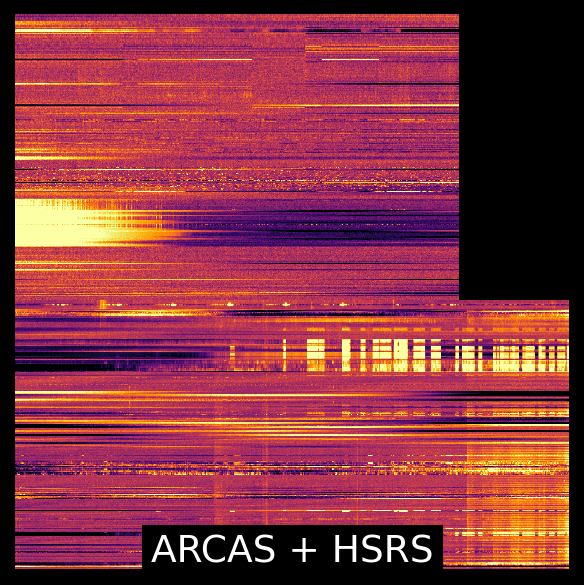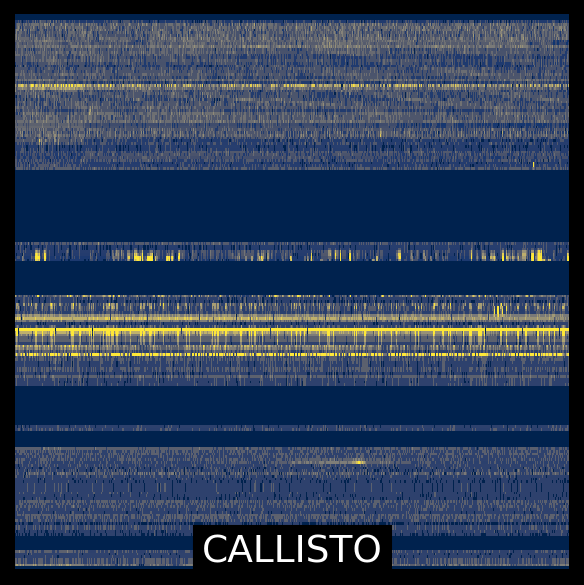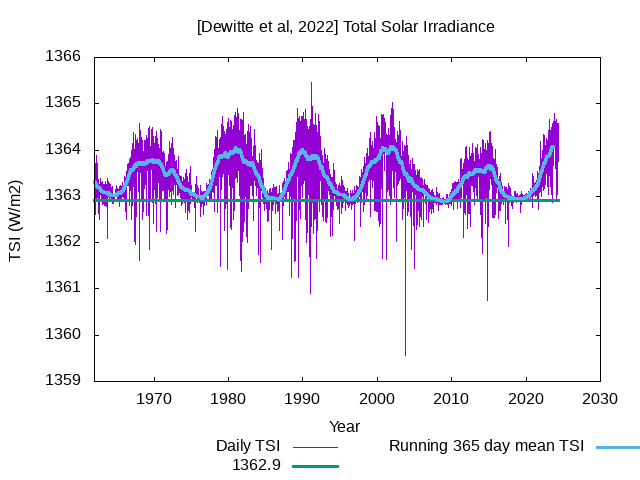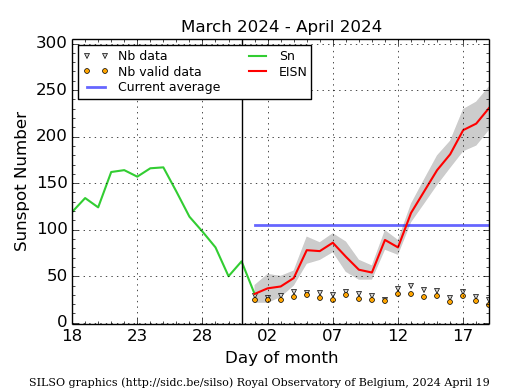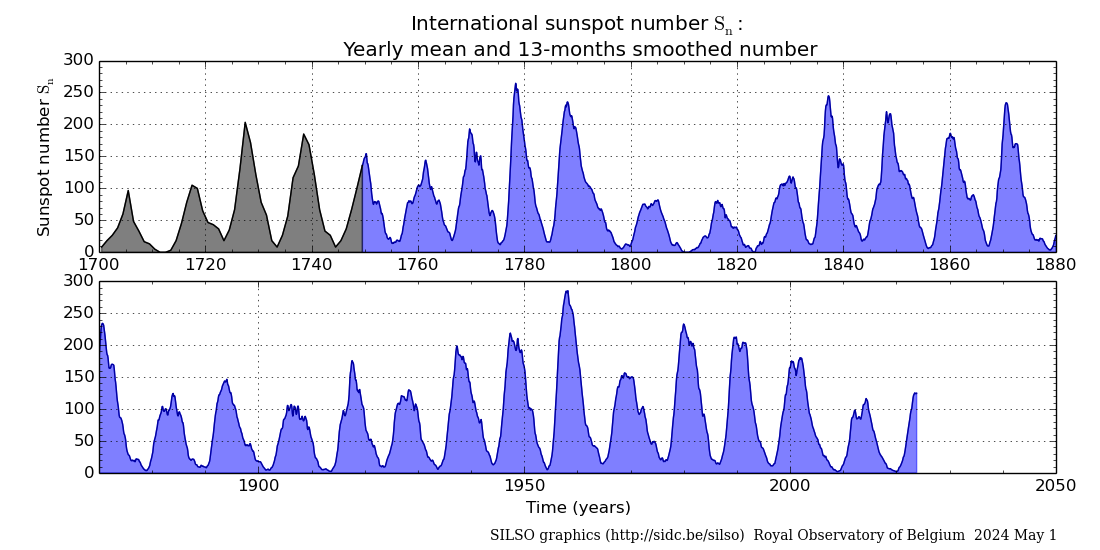Solar flaring activity was at low levels over the past 24 hours with background C-class flaring. With several regions rotating behind the west limb there are currently 11 numbered active regions on the visible solar disc with NOAA AR 3654 (beta-gamma) near disc centre being the largest and most complex region. A new regions has fully rotated from the east limb, but remains silent. A few other small and simple regions in the easter hemisphere also remain quiet and unnumbered. The strongest activity was a C6.1 flare, peak time 20:22 UTC on April 26th, possibly produced by NOAA AR 3648 (previously beta-gamma) from the the west limb. The solar flaring activity is expected to be at low to moderate levels over the next days with possible isolated M-class flaring mainly from NOAA AR 3654 and less likely from NOAA AR 3648.
A large filament eruption was observed to lift off the south-east hemisphere around 18:00 UTC on April 26th with resulting slow coronal mass ejection (CME) and white light shock visible in the LASCO/C2 coronagraph imagery. Current analysis suggests no Earth-directed impact from this CME. No other Earth-directed CMEs have been observed in the available coronagraph imagery over the past 24 hours.
A long negative polarity coronal hole stretching from high northern latitudes down to the equator is now touching the central meridian. The high speed stream emanating from it might arrive to Earth on May 1st.
Over the past 24 hours the greater than 10 MeV GOES proton flux was at background levels and is expected to remain so over the next days, pending any fast eruptive solar activity.
The greater than 2 MeV electron flux as measured by GOES 16 and GOES 18 was below the1000 pfu threshold over the past 24 hours. The greater than 2 MeV electron flux as measured by GOES 16 and GOES 18 is expected to remain below the 1000 pfu threshold in the next 24 hours. The 24h electron fluence was at nominal levels and is expected to remain so over the next 24 hours.

